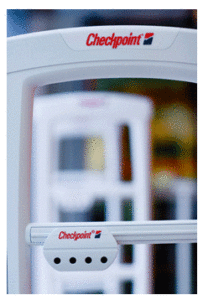 A French Historian is accused of stealing American war heroes’ dog tags to sell on eBay.
A French Historian is accused of stealing American war heroes’ dog tags to sell on eBay. - Store clerk accused of stealing thousands in lottery tickets
The retail industry is not the only one dealing with theft in the United States. The retail industry looses more than $35 million dollars to shoplifting every day in the United States. But, theft does not seem to restrict itself to retailers, theft occurs in every place where the opportunity arises. The shoplifter can be a member of a shoplifting ring, or a regular shopper who has a job, a family, or even financial stability.
There is not a profile of a typical shoplifter. The shoplifter can be a government representative or a store clerk, a policeman or a French Historian, a shoplifter can be a member of your family or a neighbor. Many of these people often times feel ashamed or are unable to talk about this issue with other people and are unable to seek help, but the problem does not go away, and everyone looses.
If you are in the retail industry and believe what a shoplifter looks like as they enter the store, then you have already lost against shoplifting. Training the management and employees of a store to combat shoplifting is an important aspect of any store that wants to be profitable.
Read more about this and other issues by clicking the links below.
Exactly What Is a Shoplifter and How Much Do You Know?
Industry veterans may find it odd to ask ‘What is a shoplifter?’ after years of experience. But it’s always good to revisit the fundamentals.
When asked “What is a shoplifter?”, most readers of the LPM Insider probably have a pretty good idea of how to respond. I do too, but it’s interesting what you learn (or re-learn) when you actually do some research on the subject. If you look up the definition of shoplifting, you will find different variations in wording. Some reference larceny, some concealment, and others talk about intent. But the basic definition boils down to this: shoplifting is the “theft of merchandise from a store or place of business.”
The terms “shoplifting” or “shoplifter” are not usually defined by law. The crime of shoplifting generally falls under the legal classification of larceny and can be a misdemeanor or felony, depending on the dollar amount stolen. State by state, larceny laws vary greatly.
For the average person, shoplifting is sometimes confused with burglary or robbery. However, all three are different. Burglary refers to unlawful entry into a building with the intent to commit a crime, especially theft. If a burglar is successful, they will not come in contact with another person.
Shoplifting girl sparks compassion from Atlanta police officer
Atlanta (CNN)In a rough part of this city’s northwest side, the call about a shoplifter at a discount store should have been straightforward.

 As many of you know Alpha High Theft Solutions was acquired by Checkpoint Systems many years ago. Checkpoint has encouraged Alpha’s brand growth and innovation. Alpha has produced the best high theft solutions, hands down in the industry. Innovations like Spider Wrap, Keepers, Bottle Locks, Cable Locks, Shark Tags, specialized hard tags literally protect billions of retail products worldwide.
As many of you know Alpha High Theft Solutions was acquired by Checkpoint Systems many years ago. Checkpoint has encouraged Alpha’s brand growth and innovation. Alpha has produced the best high theft solutions, hands down in the industry. Innovations like Spider Wrap, Keepers, Bottle Locks, Cable Locks, Shark Tags, specialized hard tags literally protect billions of retail products worldwide. Shortage control and theft prevention for small retailers which have no Loss Prevention Associates in the store was the topic of a recent article in an online loss prevention magazine. The points were well made and much of it was directed at stores that may have district or regional Loss Prevention Managers. But the truth is there are many small, independent retailers with no affiliation to a larger company. How do these stores cope with reducing shrink and preventing theft? It could be a tough problem but Loss Prevention Systems Inc. (LPSI)has the solutions that can keep small stores keep shortage down and profits up.
Shortage control and theft prevention for small retailers which have no Loss Prevention Associates in the store was the topic of a recent article in an online loss prevention magazine. The points were well made and much of it was directed at stores that may have district or regional Loss Prevention Managers. But the truth is there are many small, independent retailers with no affiliation to a larger company. How do these stores cope with reducing shrink and preventing theft? It could be a tough problem but Loss Prevention Systems Inc. (LPSI)has the solutions that can keep small stores keep shortage down and profits up. Have you ever noticed that when a convenience store robbery takes place the crook never demands all of the credit card slips? I have never heard of a bank robber pulling out a gun and yelling for the teller to give them all of the checks in the drawer. What is it the bad guys are always trying to get their hands on…CASH! While Loss Prevention departments do work on credit card and fraudulent check cases our bigger concern is cash theft and fraud. It has been my experience that in many incidents involving a stolen credit card or check, I have been able to work with bank investigators and police detectives to identify and in some cases resolve those crimes. In those situations there is usually a victim as well as a perpetrator of the crime. When it comes to cash loss cases it becomes another matter altogether, the victim is the store. While we may have video of the crime there may not be any other means of tying in additional information. Another issue with cash losses is that the stolen money cannot be tracked further. Stolen credit cards tend to leave a trail of locations where they are used which can lead to greater opportunities to pick up on additional evidence. The same can be true with fraudulent check writing cases. With a cash loss case, once it’s gone you don’t see it again, money is not traced.
Have you ever noticed that when a convenience store robbery takes place the crook never demands all of the credit card slips? I have never heard of a bank robber pulling out a gun and yelling for the teller to give them all of the checks in the drawer. What is it the bad guys are always trying to get their hands on…CASH! While Loss Prevention departments do work on credit card and fraudulent check cases our bigger concern is cash theft and fraud. It has been my experience that in many incidents involving a stolen credit card or check, I have been able to work with bank investigators and police detectives to identify and in some cases resolve those crimes. In those situations there is usually a victim as well as a perpetrator of the crime. When it comes to cash loss cases it becomes another matter altogether, the victim is the store. While we may have video of the crime there may not be any other means of tying in additional information. Another issue with cash losses is that the stolen money cannot be tracked further. Stolen credit cards tend to leave a trail of locations where they are used which can lead to greater opportunities to pick up on additional evidence. The same can be true with fraudulent check writing cases. With a cash loss case, once it’s gone you don’t see it again, money is not traced.


